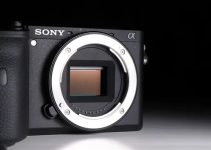Cinema may have moved (mostly) past the film vs digital debate, but that just opened the door for a new one: ARRI vs RED. These two giants of the industry hold a majority of the high-end cinema camera market for good reason. ARRI brings decades of expertise and a look that many would say can be beaten while RED pushes boundaries and has ever-increasing resolutions and technology that make their tools very appealing.
Today, we have a selection of ARRI and RED cameras put up against each other by filmmaker Arturo Madrazo. Basically, in these tests can you really see a difference? We have the ARRI ALEXA Plus in 2K, the ARRI ALEXA Mini LF in 3.2K S35 Mode, and both the RED KOMODO and RED DRAGON-X in 6K. It sounds easy, right?
All these cameras are running in Super 35mm at some of their best settings. For ARRI, this means both are set to Apple ProRes 4444. RED is using R3D, with the KOMODO at MQ and the DRAGON-X at a similar 8:1 setting. All the cameras were set to ISO 800.
The footage in the first test is graded using only the manufacturer’s LUT for Rec.709. It’s a blind test, so you really will have to guess. The only unfortunate thing is that you can see a tint in some images (green is strong on camera B). However, it’s still interesting to check out what you can get practically right away.
Outside of color shifts, the differences are all quite subtle. And when it shifts over to log it becomes even more difficult to really tell differences in quality. You have to start looking at the shadows and highlights to see where you might start getting noise or losing detail. And still, these are all quite close. It’s surprising considering the significant differences and release dates of the cameras themselves.
Finally, there’s a graded version. This adds a ton more contrast and you can start making out bigger differences in detail. It’s somewhat easy to see that the RED options are delivering with their 6K video. However, without being side-by-side the minor loss of detail isn’t a problem for ARRI.
Honestly, it’s another test that shows it really isn’t the camera that matters in the end. Though, it does prove that the quality of sensors and things like dynamic range make a much bigger difference than resolution. You really don’t need to worry about picking up a camera with more than 4K resolution still. It’s nice to have, but absolutely not a necessity.
I’m not going to give away the answers here, but were you able to tell the difference and were you right?
[source: Arturo Madrazo]
Order Links:
- ARRI ALEXA Mini LF Cinema Camera (B&H)
- RED DSMC2 BRAIN with DRAGON-X 6K S35 Sensor (B&H, Adorama)
- RED KOMODO 6K Cinema Camera (B&H, Adorama)
Disclaimer: As an Amazon Associate partner and participant in B&H and Adorama Affiliate programmes, we earn a small comission from each purchase made through the affiliate links listed above at no additional cost to you.



